With more than $4 billion in revenue worldwide, eCommerce is one of the most lucrative industries for companies and individuals who know how to win customers’ hearts at scale. However, the big numbers will only come if you know how to treat every customer individually throughout their journey.
Indeed, shopping personalization is King. Over 75% of U.S. internet users said personalized content from retailers increases their purchase intent, while 75% of online consumers are likely to buy from a retailer that recognizes them.
Read on to learn everything you need to know about personalization in eCommerce, including the most vivid e-commerce personalization examples that have set the companies apart from the competition.
What Does E-commerce Personalization Mean?
eCommerce personalization is a practice of tailoring the shopping experience to the customer’s individual needs: past purchases, browsing behavior, age, location, and other statuses. The more data you collect, the easier it is to personalize your marketing campaigns for a specific lead, turning them into clients down the road.
Most businesses use personalization to some degree:
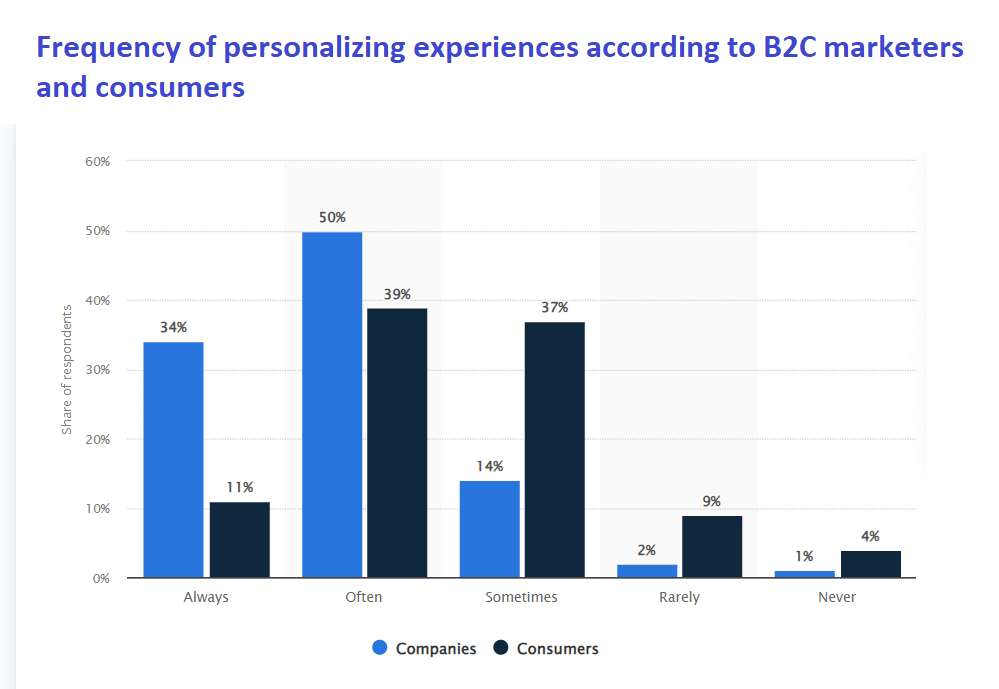
Source: Statista
Moreover, 65% of consumers say personalization in e-commerce is crucial for their shopping experience. For online businesses, this also means serving the right content at the right time to the right lead so they can arrive at the destination point, be it a registration, an online form, or a call with a sales representative.
On a similar note, 91% of customers are more likely to shop in companies providing personal product recommendations, and 83% gladly share their data to get an even more tailored experience.
Customer Privacy VS E-Commerce Customization
Customers want personalized e-commerce, but they don’t want to share their sensitive data within KYC or other AML-inspired deanonymization. The whole thing has evolved into the death of third-party cookies on many websites, but the good news is that you can still build an e-commerce personalization experience for your clients.
One way of doing it is by letting users know that their data will only be used for providing them with the personalized products they’re looking for:
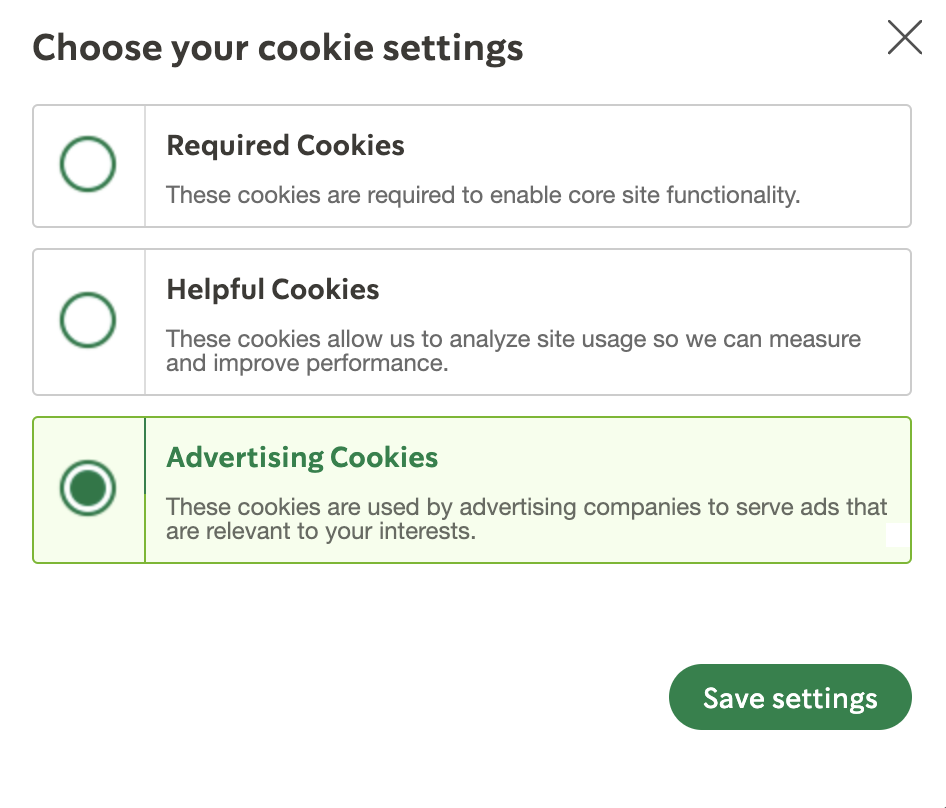
Source: Starbucks
At the same time, modern consumers don’t want brands to define their marketing journeys—instead, they want tailored experiences from a trusted brand, that help them choose their path. In fact, more than 50% of customers gladly share personal data with trusted businesses, while the lack of hopping personalization scares away as much as 38% of them.
The 4 Key Benefits of eCommerce Personalization
According to Forester, 77% of users chose, recommended, or paid more to use a brand that provides tailored services. Through personalized shopping, businesses increase brand loyalty, improve engagement with conversion, and get a higher average order value (AOV).
| Brand Loyalty | Personalized e-commerce experiences make shopping more comfortable and clients more loyal to the brand. On the other hand, a whopping 71% of customers are unlikely to buy from a business that loses credibility and trust. |
|---|---|
| Engagement | For 67% of users, it’s important to get content that matches their needs and wants. Precise e-commerce personalization is a sign of good customer service and a way to boost engagement across touchpoints. |
| Sales | eCommerce content personalization can increase conversions by up to 8%. When people see a product that suits their current needs, they are more likely to buy it.
Businesses with advanced personalized commerce strategies report a $20 return on a $1 investment. According to a SmarterHQ report, 80% of frequent shoppers only purchase with brands that provide personalized experiences. |
| AOV | Personalized product recommendations help to cross-sell complementary items: customer journeys can increase average orders by up to 12%, with 50% of online shoppers willing to share their info to get personalized discounts. |
One of the easiest ways to design personalized user experiences in e-commerce is by using the customer’s browsing data. This way, you can suggest relevant products, send personalized emails, and generally serve what your customers like the most.
10 eCommerce Personalization Examples.
1. Special Offer to First-Time Visitors
The first impression is often the most important one. Welcome perks are a great way to let users test your products without significant commitment. For example, you can offer a discount on the first purchase in exchange for their email address.
Here’s an unprecedented discount from Shein:
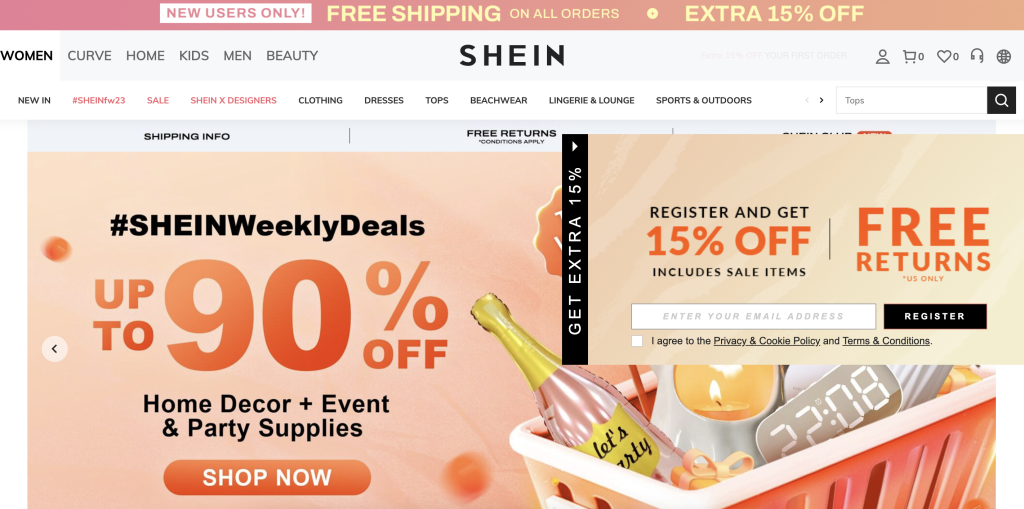
Source: Shein
Not only do they offer an extra 15% discount for items on sale, but they also provide free shipping and free returns, instantly creating a trustful atmosphere for new customers. Next, they can unroll personalization as they want.
2. Recommended Searches
When a company sells many items, potential customers may get overwhelmed (think of Walmart or Best Buy). However, tailored recommendations solve this problem, enabling the most relevant products to customers without the need to dig deep into the store.
But then again, it’s equally important to categorize your products effectively so your visitors can find their first few products quickly before the recommendation algorithms kick in.
The TJ Maxx website is a great example: they distinguish their main categories and place them on clickable images to ease the navigation process.
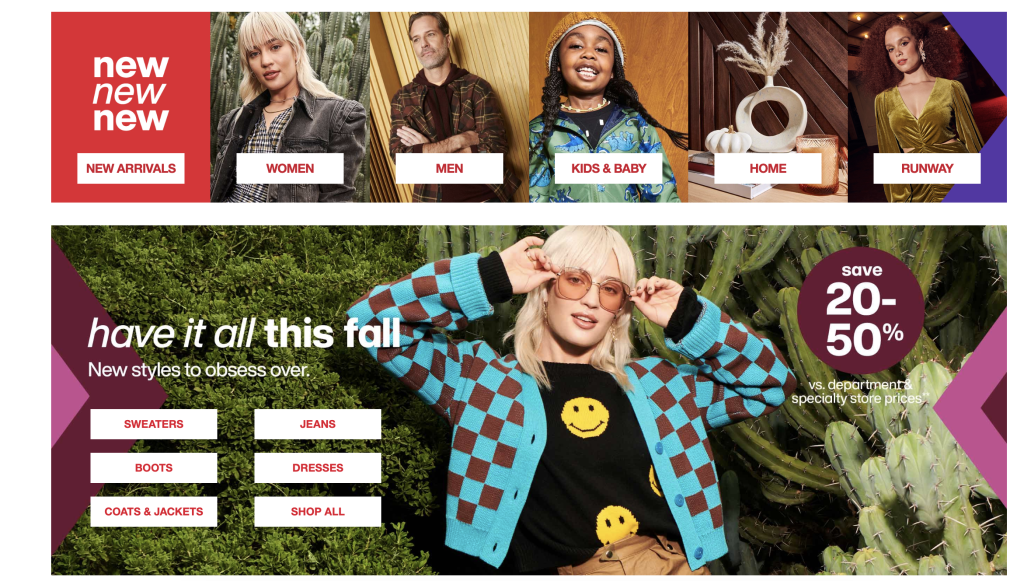
Source: TJ Maxx
3. Product Suggestions
Tailored bestsellers are another great example of customization in e-commerce. People are drawn to popular products because it’s natural to use goods approved by many people who experience similar needs: social proof in action.
You can display the most bookmarked, trending, or locally popular products. For example, if a potential client sees that a certain laptop is more popular than alternatives, at least they click on its page to find out why this product attracts people.
Walmart is successfully using this practice, promoting tech, beauty, and seasonal products on their homepage:

Source: Walmart
Another fine example is Best Buy. They show the most popular products for the season: laptops during the preschool period, heaters in October-November, and game consoles around Christmas.

Source: DSW
Once the user switches to more casual shoes like heel sandals, DSW immediately changes recommendations to suit the user’s needs.

Source: DSW
5. Complementary Products
No matter what they buy, you can offer a complementary product. For example, if the laptop costs $1000 and the headphones are worth $400, you can set a bundle deal for $1350.
Kohl’s online shop is a great personalized experience example. They have a “Style it in your way” block to show potential looks with chosen products for any weather. A user can add more products to the cart in a few clicks.
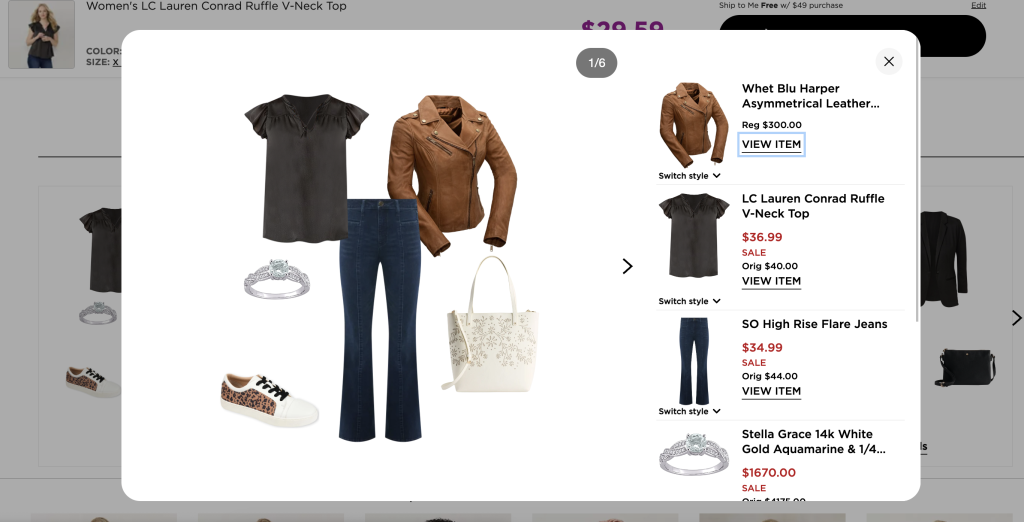 Source: Kohl’s
Source: Kohl’s
6. Personalize Exit Offers
If the user leaves the site without a purchase, a tailored exit offer can save the day for you. Take, for example, Shein. Once the user stops browsing them for 2-3 minutes, the page automatically changes its title to “You forget about that page!”. After the user comes back, they get a discount.
7. Marketing Pop-ups
If users browse your site for too long but don’t add anything to their shopping cart, try in-session marketing. Set a series of time-framed or action-triggered offers that match visitor session behavior, such as a discount, free delivery, additional items, etc.
8. Continuous Shopping for Returning Customers
Netflix and HBO MAX Continue Watching features are working engagement tactics that help keep users on their platforms. YouTube implemented it as an Auto-Play feature.
You can modify this approach and add it to the e-commerce site. A great example here is AliExpress. When users confirm their purchase, the platform encourages them to continue shopping by asking to add more relevant products to the current order.
9. Special Offers To Lost Buyers
Many users ignore promotional letters, so your task is to write an engaging one: recovery cart notification, a request to vote for updates, or anything that drives user attention back to your site.
Offensive Crayons have a long pause in their mailing. They had only one chance to draw back customers’ attention, and they did it great:
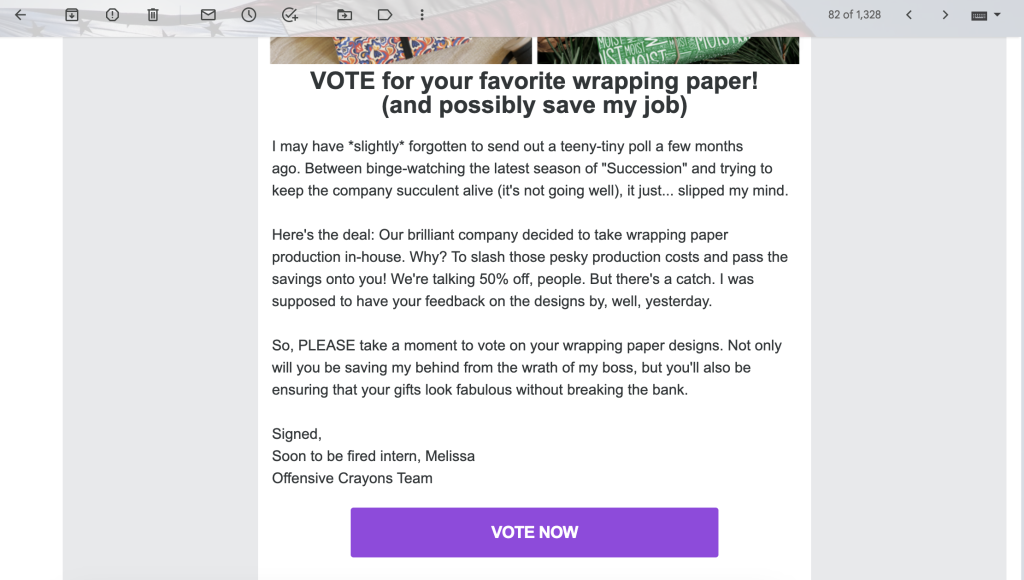
Source: Offensive Crayons
When users open the letter, they see a message where the marketer admits that they forgot about mailing and may get fired. The only way for the Offensive Crayons marketer to stay at their job is to make users vote for new wrapping paper.
Here’s another creative way to get users’ attention:
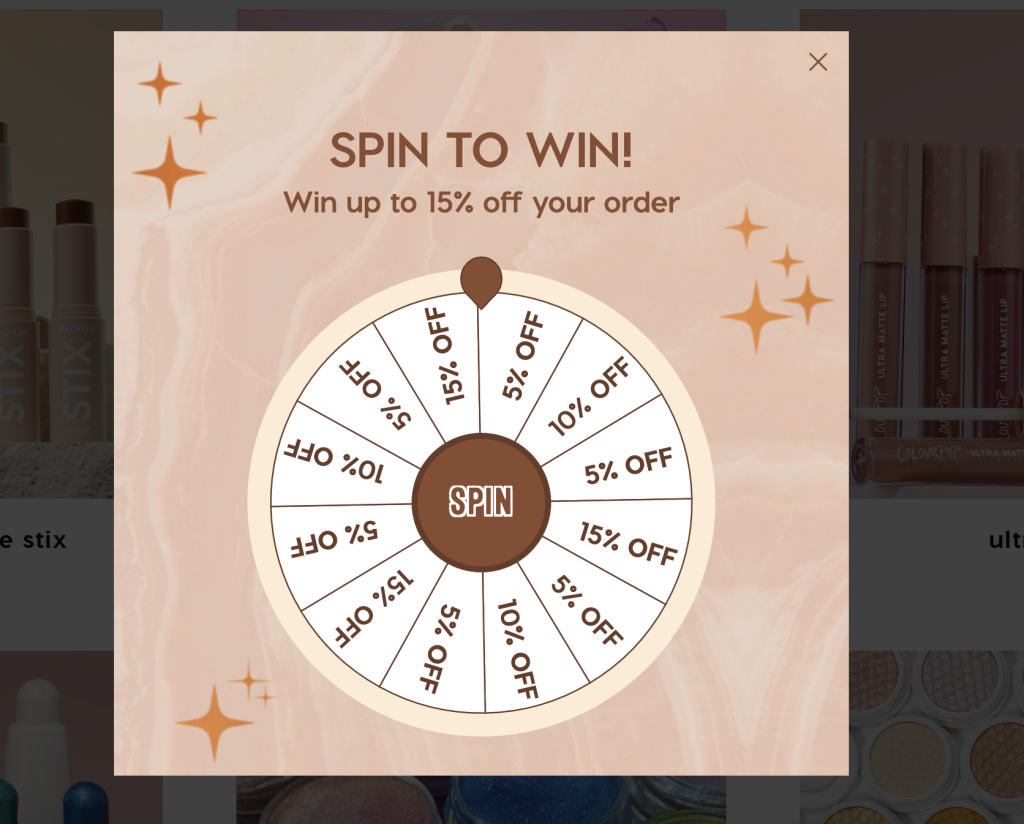
Source: ColourPop
- Email Suggestions and Deals
Another way to reengage inactive users is by sending them a profitable deal. Remember, acquiring new customers is more expensive than retaining old ones.
Here’s how Sephora reactivates users:
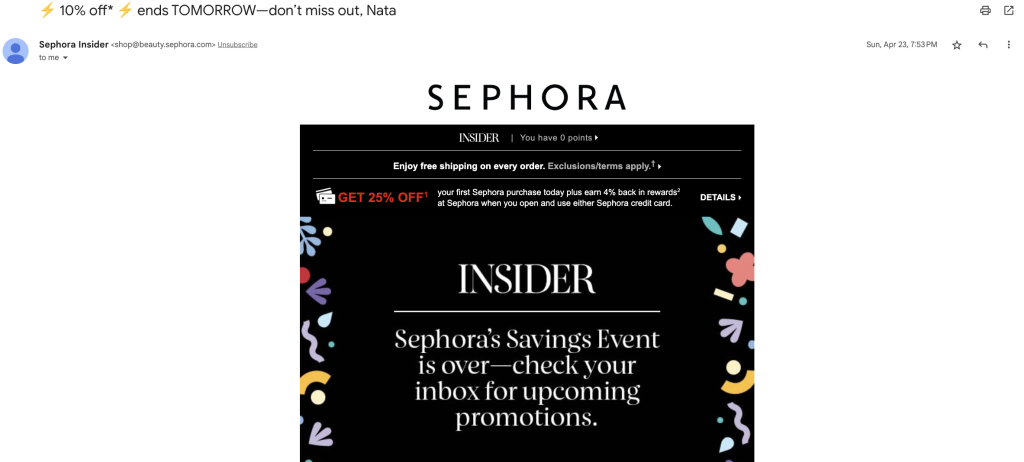
Source: Sephora
Email Marketing Extravaganza at MailCon Show in New York
MailCon is back with a one-day email performance and deliverability conference on July 28th in New York City.
Every attendee will get:
- Productive email marketing sessions reinforced with panels and workshops addressing the most pressing topics for mailers
- Speaking and exhibition opportunities
- Connecting with renowned email marketing professionals and experts
And here’s why MailCon is the coolest email marketing event you can attend:
Here are some of the topics you’ll get covered on July 28th:
- Brand Safety & Better Subscriptions: What You Need to Know, by Ebenezer Anjorin, Lead Product Manager at Google Workspace
- Email Deliverability Starts Where Best Practices Fall Short, by Adrian W. from Email Angels
- The Importance of Securing Your Email Infrastructure and How to Do It, by Kevin A. McGrail, CEO of Peregrine Computer Consultants Corporation, and LB Blair, Head of Deliverability at Email Industries.
- Future-Proof Your Brand Like Beyoncé: Integrating Email & Social Media for Iconic Digital Presence, by Carlos Gil from GetResponse
- Insights from the expertise of renowned email deliverability consultants like Trey Bennett, Keith Kouzmanoff, Jakub Olexa, and more
- Expert panel on navigating the complexities of consumer privacy and compliance regulations, by Eric J. Troutman, Puja J. Amin, and Brittany Andres
- Marketing Crossfire session hosted by Channel Automation™ and featuring industry thought leaders
And so much more!
Get your tickets now before they sell out!
For those new, here’s everything you need to know about MailCon in just 90 seconds:
Frequently Asked Questions
What is e-commerce personalization?
E-commerce personalization is the practice of tailoring the online shopping experience to the individual needs of each customer. Businesses can use past purchases, browsing behavior, and demographics to deliver relevant offers.
What are the 4 Rs of personalization in e-commerce?
It’s relevance, recognition, responsiveness, and results. Ensure that personalized e-commerce content is relevant to the user. Recognize user preferences to serve the right content to the right customer. Finally, be responsible in providing content – do it at the right time by specific trigger – and measure the results to adjust your strategies.
What are retail personalization examples?
The most common examples of retail personalization include tailored recommendations and loyalty programs for repeat customers. Many businesses also use targeted email campaigns with customized content.









